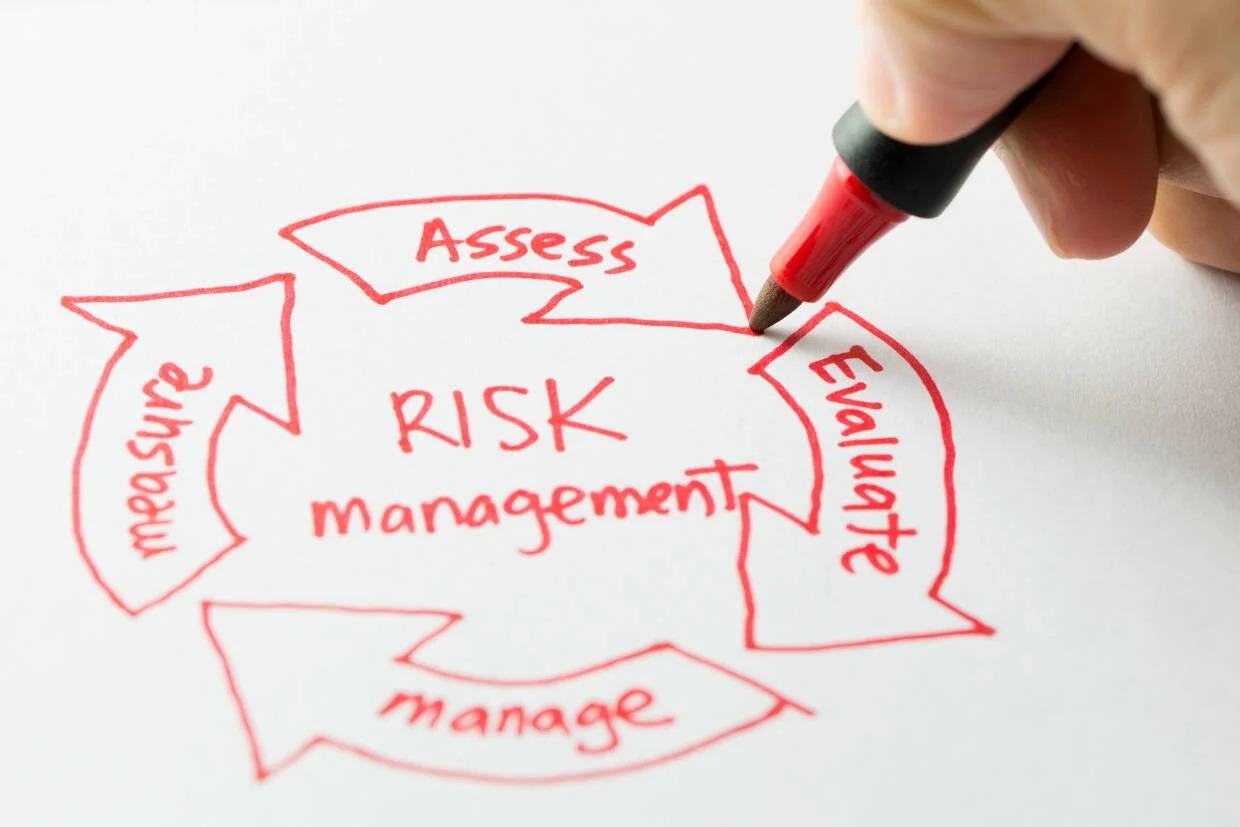

Finance
What Is A DD In Stocks
Published: January 18, 2024
Learn about DD in stocks and how it impacts your finances. Gain insights on the importance of due diligence for successful investing.
(Many of the links in this article redirect to a specific reviewed product. Your purchase of these products through affiliate links helps to generate commission for LiveWell, at no extra cost. Learn more)
Table of Contents
Introduction
Welcome to the exciting world of stocks and investing! If you are new to the stock market, you may have come across the term “DD” or “due diligence” when researching potential investments. DD, short for due diligence, is a crucial process that every investor should undertake before making investment decisions.
In this article, we will delve into the world of DD in stocks and explore its importance in making informed investment choices. We will discuss the definition of DD, its components, and the various types of DD methods that investors can employ. Additionally, we will provide practical steps on how to conduct thorough DD and highlight common mistakes to avoid. Lastly, we will examine the benefits of utilizing DD in stocks through real-life case studies.
Whether you are a seasoned investor or just starting on your investment journey, understanding and implementing a robust DD process is essential for maximizing your chances of success in the stock market.
So, let’s dive in and explore the fascinating world of DD in stocks!
Definition of DD in Stocks
DD, also known as due diligence, refers to the comprehensive process of conducting research, analysis, and investigation on a potential investment opportunity in the stock market. It involves gathering and evaluating relevant information to assess the potential risks and rewards associated with a particular stock or company.
The main purpose of DD in stocks is to enable investors to make well-informed decisions by thoroughly understanding the financial health, performance, and prospects of a company. By conducting DD, investors can gain insights into factors such as the company’s business model, competitive positioning, industry trends, management team, financial statements, and any other critical information that can impact the investment value.
DD in stocks can cover a wide range of areas, including financial analysis, fundamental analysis, industry analysis, legal and regulatory compliance, corporate governance, and more. It helps investors gauge the suitability and potential of an investment, identify any red flags or concerns, and determine the fair value of a stock.
It is important to note that DD is not limited to individual investors. It is also undertaken by financial institutions, investment banks, private equity firms, and other entities involved in making investment decisions. DD plays a vital role in evaluating companies during mergers and acquisitions, initial public offerings (IPOs), and other corporate transactions.
Overall, DD in stocks is a systematic process that involves thorough research, analysis, and evaluation to assess the risks and rewards of a potential investment. It provides investors with confidence and insights to make well-informed investment decisions in the dynamic and complex world of the stock market.
Importance of DD in Stocks
The importance of conducting thorough due diligence in stocks cannot be overstated. DD is a critical step that allows investors to gain a deep understanding of the investment opportunity and make informed decisions. Here are several reasons why DD in stocks is of utmost importance:
- Minimizes Risk: DD helps investors identify and understand the potential risks associated with a stock. By thoroughly analyzing a company’s financials, industry trends, and competitive landscape, investors can uncover any red flags or areas of concern that may affect the investment’s performance. This helps in mitigating potential risks and avoiding costly mistakes.
- Ensures Financial Soundness: Through DD, investors can assess a company’s financial health and stability. They can analyze financial statements, balance sheets, cash flows, and key financial ratios to evaluate the company’s profitability, liquidity, and overall financial performance. Understanding the financial standing of a company is vital in determining the investment’s potential for growth and sustainability.
- Evaluates Growth Potential: DD allows investors to assess the growth prospects of a company. By studying the industry trends, market dynamics, and competitive landscape, investors can gauge the potential for revenue growth, market share expansion, and product innovation. This information is crucial in identifying companies with long-term growth potential and aligning investment decisions accordingly.
- Assesses Management Quality: DD involves evaluating a company’s management team and their track record. Investors can analyze their experience, expertise, and past performance to assess their ability to steer the company towards success. A strong and capable management team is often indicative of a well-managed and growth-oriented company.
- Determines Valuation: DD helps investors determine the fair value of a stock. By analyzing factors such as earnings growth, cash flow projections, and market comparables, investors can estimate the intrinsic value of a company’s shares. This allows them to make investment decisions based on the stock’s potential undervaluation or overvaluation.
In summary, conducting thorough DD in stocks is crucial for minimizing risk, ensuring financial soundness, evaluating growth potential, assessing management quality, and determining fair valuation. By investing the time and effort into due diligence, investors can make informed decisions and increase their chances of success in the stock market.
Components of a DD in Stocks
A comprehensive due diligence (DD) process in stocks involves various components that investors need to consider to gain a holistic understanding of a potential investment opportunity. Here are some essential components of a DD in stocks:
- Financial Analysis: This component involves analyzing a company’s financial statements, including income statements, balance sheets, and cash flow statements. Investors assess key financial ratios, such as profitability, liquidity, and solvency, to evaluate the company’s financial health and performance.
- Fundamental Analysis: Fundamental analysis is a critical component of DD, focusing on evaluating a company’s business model, competitive positioning, and market fundamentals. Investors examine the company’s industry dynamics, competitive landscape, and growth prospects to assess its long-term potential.
- Industry Analysis: Understanding the industry in which a company operates is vital. Investors analyze industry trends, market size, competition, regulatory environment, and any other factors that may influence the company’s performance. This helps in assessing the company’s competitive advantage and its ability to thrive in the industry.
- Legal and Regulatory Compliance: Investors need to ensure that the company complies with all applicable legal and regulatory requirements. They examine legal contracts, licenses, permits, and any potential legal issues or pending litigations that may impact the investment’s viability.
- Management Assessment: Evaluating the quality and competence of a company’s management team is crucial. Investors examine the experience, expertise, and track record of key executives to assess their ability to drive the company’s growth and make strategic decisions.
- Customer and Supplier Analysis: Investors analyze the relationships between the company and its customers and suppliers. They assess customer satisfaction, customer acquisition and retention, supplier dependency, and supplier reliability to understand the company’s market position and operational stability.
- Corporate Governance: This component focuses on the company’s governance structure, including the board of directors, shareholder rights, transparency, and ethical practices. Investors assess the company’s corporate governance policies and practices to ensure alignment with their investment principles.
- Risk Assessment: Identifying and assessing potential risks is an essential part of DD. Investors analyze various risk factors, including market risks, operational risks, financial risks, and reputational risks, to understand the potential challenges and uncertainties associated with the investment.
These components provide a framework for investors to conduct a thorough DD in stocks. By evaluating each aspect, investors can gather comprehensive information to make well-informed investment decisions and mitigate potential risks.
Types of DD in Stocks
Due diligence (DD) in stocks can be approached from different angles, depending on the specific needs and preferences of investors. Here are several types of DD commonly employed by investors:
- Financial DD: This type of DD focuses primarily on analyzing the financial aspects of a company. It involves a detailed examination of financial statements, cash flow projections, and key financial ratios to understand the company’s financial health, stability, and performance.
- Legal DD: Legal DD emphasizes assessing the legal framework in which a company operates. It involves reviewing legal contracts, agreements, intellectual property rights, and compliance with laws and regulations. This evaluation helps investors identify any potential legal risks or obligations associated with the investment.
- Commercial DD: Commercial DD centers around market-oriented factors. It includes analyzing the company’s market positioning, customer base, competitive landscape, and industry trends. This type of DD helps investors gauge the company’s growth potential, market share, and overall viability in the marketplace.
- Operational DD: Operational DD focuses on evaluating a company’s operational efficiency and effectiveness. It involves analyzing the company’s supply chain, production capabilities, distribution networks, and technology infrastructure. Through this type of DD, investors can assess the company’s ability to deliver products or services in a timely and cost-effective manner.
- Environmental, Social, and Governance (ESG) DD: ESG DD involves assessing a company’s environmental, social, and governance practices. Investors evaluate factors such as the company’s environmental impact, labor practices, diversity and inclusion policies, and corporate governance standards. This type of DD allows investors to align their investments with their values and sustainability goals.
- Technical DD: Technical DD focuses on analyzing a company’s technological capabilities and innovation potential. It involves assessing the company’s research and development initiatives, patents, intellectual property, and technological infrastructure. Investors utilize this type of DD to evaluate the company’s ability to stay competitive and adapt to technological advancements.
Each type of DD provides a different perspective and focuses on specific aspects of the investment opportunity. Depending on the investor’s goals and preferences, a combination of these DD types can be utilized to gather a comprehensive understanding of the company and make well-informed investment decisions.
Steps to Conduct DD in Stocks
Conducting thorough due diligence (DD) in stocks is a systematic process that involves several important steps. These steps help investors gather relevant information, analyze it, and make informed investment decisions. Here are the key steps to follow when conducting DD in stocks:
- Set Investment Goals: Before initiating the DD process, investors should define their investment goals and criteria. This helps in focusing the DD efforts on companies that align with their investment objectives, whether it’s growth, income, or value investing.
- Gather Information: Begin by gathering information about the company and the industry in which it operates. Use reliable sources such as financial reports, company websites, regulatory filings, industry publications, and news articles to obtain a comprehensive view of the company’s operations, financials, and market dynamics.
- Analyze Financial Statements: Thoroughly analyze the company’s financial statements, including the income statement, balance sheet, and cash flow statement. Assess key financial ratios, such as profitability, liquidity, and leverage, to understand the company’s financial health and performance.
- Evaluate Competitive Positioning: Assess the company’s competitive positioning within its industry. Analyze its market share, competitive advantage, and product differentiation. This helps in understanding the company’s ability to withstand competition and maintain its market position.
- Assess Management Team: Evaluate the management team’s qualifications, experience, and track record. Research their past accomplishments, leadership style, and strategic vision. A competent and experienced management team is crucial for the company’s success and execution of its growth plans.
- Review Legal and Regulatory Compliance: Assess the company’s compliance with legal and regulatory requirements. Review contracts, licenses, permits, and any potential legal issues or pending litigation. This helps in identifying any legal risks or liabilities associated with the investment.
- Consider Industry Trends and Outlook: Study industry trends, market dynamics, and future growth prospects. Analyze factors such as technological advancements, consumer behavior, regulatory changes, and competitive landscape. This helps in evaluating the industry’s attractiveness and assessing the company’s potential for future growth.
- Conduct Interviews and Site Visits: If possible, conduct interviews with company management or industry experts to gain additional insights. Consider visiting the company’s facilities or observing its operations firsthand to assess the company’s operational capabilities and culture.
- Evaluate Risks and Rewards: Identify and evaluate the potential risks and rewards associated with the investment. Assess market risks, operational risks, financial risks, and any other relevant factors that may impact the investment’s performance. This helps in making a balanced assessment of the investment opportunity.
- Make an Informed Decision: Based on the gathered information and analysis, make an informed decision about whether to proceed with the investment. Consider the investment’s alignment with your goals, the potential risks and rewards, and the valuation of the company’s shares.
Remember that due diligence is an ongoing process, and it should continue throughout the investment period. Regular monitoring and reassessment of the investment are necessary to adapt to changing market conditions and company performance.
Common Mistakes to Avoid in DD
While conducting due diligence (DD) in stocks, it’s important to be aware of common mistakes that investors often make. These mistakes can undermine the effectiveness of the DD process and lead to poor investment decisions. Here are some common mistakes to avoid when conducting DD in stocks:
- Overlooking Financial Red Flags: Failing to thoroughly analyze financial statements and overlooking financial red flags can be detrimental. It’s essential to scrutinize the company’s financial health, profitability, debt levels, and cash flow patterns to identify any potential concerns.
- Ignoring Industry Analysis: Neglecting to conduct a thorough analysis of the industry in which the company operates can lead to missed opportunities or investing in industries with limited growth potential. Evaluating industry trends, competitive dynamics, and market outlook is crucial to assess the company’s prospects.
- Neglecting Management Assessment: Ignoring the assessment of the company’s management team and their track record can be a significant mistake. The competence, integrity, and experience of the management team play a critical role in the company’s success. It’s important to evaluate their ability to execute strategies and drive growth.
- Insufficient Due Diligence Time: Rushing through the due diligence process due to time constraints can lead to inadequate research and analysis. Insufficient time can result in missing critical information and making hasty investment decisions. Allocate enough time to thoroughly gather and evaluate information.
- Not Assessing Risks Properly: Neglecting to assess and understand the potential risks associated with the investment can lead to unexpected losses. It’s essential to identify and evaluate various risks, such as market risks, operational risks, and regulatory risks. Consider the risk-reward ratio before making investment decisions.
- Failure to Seek Independent Expert Opinions: Relying solely on one’s own analysis and not seeking external expert opinions can be a mistake. Consulting industry experts, financial advisors, or professionals with specialized knowledge can provide valuable insights and help validate investment decisions.
- Disregarding Legal and Regulatory Compliance: Ignoring legal and regulatory compliance can lead to legal troubles and unexpected liabilities. It’s crucial to thoroughly review the company’s compliance with regulations, licenses, permits, and any potential legal issues or pending litigation that may impact the investment’s viability.
- Being Influenced by Bias or Emotion: Allowing personal biases, emotions, or short-term market trends to influence investment decisions can hinder the DD process. It’s important to maintain objectivity and make decisions based on thorough analysis and rational judgment.
- Not Considering Exit Strategies: Failing to evaluate potential exit strategies can limit investment flexibility. Consider whether the investment aligns with your short-term or long-term goals and have a plan in place for reevaluation or exiting the investment if necessary.
Avoiding these common mistakes during the DD process can help investors make more informed and successful investment decisions. Thoroughly researching, analyzing, and considering all relevant factors are crucial for mitigating risks and maximizing investment opportunities.
Benefits of Utilizing DD in Stocks
The process of conducting due diligence (DD) in stocks offers numerous benefits to investors. By thoroughly researching and analyzing potential investment opportunities, investors can make informed decisions and increase their chances of success in the stock market. Here are several key benefits of utilizing DD in stocks:
- Minimizes Risk: DD helps investors minimize risk by identifying and evaluating potential risks associated with an investment. Thorough analysis of a company’s financials, industry dynamics, and competitive landscape helps investors make well-informed decisions and avoid costly mistakes.
- Increases Confidence: DD provides investors with a deeper understanding of the investment opportunity. By conducting thorough research and analysis, investors gain confidence in their decision-making process, leading to more informed and confident investment decisions.
- Aids in Financial Analysis: DD enables investors to analyze a company’s financial statements and assess its financial health, performance, and valuation. This analysis helps investors determine the fair value of a stock, identify potential investment opportunities, and make better-informed investment decisions.
- Assesses Growth Potential: Through DD, investors can evaluate a company’s growth potential by analyzing industry trends, market positioning, product innovation, and competitive advantage. This assessment helps identify companies with significant growth prospects, increasing the potential for higher investment returns.
- Evaluates Management Quality: DD allows investors to assess the quality and competence of a company’s management team. By analyzing their experience, track record, and strategic vision, investors can gauge their ability to drive the company’s growth and make sound business decisions.
- Identifies Undervalued Opportunities: DD helps investors identify undervalued investment opportunities. Thorough analysis of a company’s financials, competitive landscape, and market positioning can reveal hidden gems that may be undervalued by the market, providing potential for profit when the market recognizes their true value.
- Offers Insights into Industry Dynamics: DD provides valuable insights into industry dynamics such as market trends, consumer behavior, and regulatory changes. This understanding helps investors anticipate industry shifts, adapt investment strategies, and capitalize on emerging opportunities.
- Aligns Investments with Goals and Values: DD allows investors to align their investments with their goals, values, and risk tolerance. By thoroughly researching companies and industries, investors can choose investments that align with their investment objectives and ethical considerations.
- Provides a Competitive Edge: DD provides investors with a competitive edge by enabling them to make more informed decisions than uninformed investors. This advantage can lead to better risk management, potential outperformance, and improved long-term investment results.
Overall, utilizing DD in stocks offers a range of benefits to investors, including risk mitigation, increased confidence, improved financial analysis, assessment of growth potential, evaluation of management quality, identification of undervalued opportunities, insights into industry dynamics, alignment with goals and values, and a competitive edge in the market. By employing thorough research and analysis, investors can make more informed investment decisions and enhance their chances of achieving their investment objectives.
Case Studies: Successful DD in Stocks
Examining real-life case studies can provide valuable insights into the effectiveness of conducting thorough due diligence (DD) in stocks. Here are a few examples of successful DD in stocks and the positive outcomes that resulted:
- Case Study 1 – Company X: In this case, an investor thoroughly conducted DD on Company X, a technology firm operating in the software industry. Through extensive financial analysis, the investor identified consistent revenue growth, strong profitability, and a solid balance sheet. The DD process also revealed that the company had a robust intellectual property portfolio and a talented management team. As a result, the investor confidently invested in Company X. Over time, the investment proved successful as the company’s stock price more than doubled, generating significant returns for the investor.
- Case Study 2 – Company Y: In this case, an investor conducted DD on Company Y, a manufacturing company operating in a cyclical industry. The DD process involved analyzing the company’s financials, industry trends, and competitive landscape. The investor also assessed the company’s ability to navigate economic downturns successfully and identified potential risks associated with the cyclical nature of the industry. Armed with this information, the investor adjusted the investment strategy to include a shorter investment horizon and a higher focus on risk management. As a result, despite facing challenges during an economic downturn, the investment in Company Y preserved capital and outperformed industry averages.
- Case Study 3 – Company Z: In this case, an investor employed DD to assess Company Z, a pharmaceutical company in the midst of developing a breakthrough drug. The investor conducted thorough research on the drug’s potential market size, competitive landscape, regulatory environment, and the company’s clinical trial progress. Through in-depth analysis, the investor gained confidence in the drug’s potential success and the company’s ability to bring it to market. The investment in Company Z paid off, with the drug receiving FDA approval and the stock price experiencing a significant surge, resulting in substantial returns for the investor.
These case studies highlight the positive outcomes that can result from conducting thorough DD in stocks. By diligently researching and analyzing investment opportunities, investors can identify companies with strong financials, growth potential, competent management teams, and innovative products or services. These factors increase the likelihood of successful investments and potentially higher returns.
It is important to note that DD is not a guarantee of success, as market conditions, unforeseen events, and other factors can impact investment outcomes. However, conducting thorough DD increases the chances of making informed investment decisions and managing risks effectively.
Conclusion
Thorough due diligence (DD) is a critical process for investors in stocks. By conducting comprehensive research, analysis, and evaluation of potential investment opportunities, investors can make informed decisions and increase their chances of success in the stock market.
Throughout this article, we explored the definition of DD in stocks and its importance in making well-informed investment choices. We discussed the various components of a DD, including financial analysis, fundamental analysis, industry analysis, legal compliance, and management assessment. We also explored different types of DD, such as financial DD, legal DD, and commercial DD.
Furthermore, we outlined the steps involved in conducting thorough DD in stocks, emphasizing the need to set investment goals, gather information, analyze financial statements, evaluate market dynamics, and assess risks and rewards. Additionally, we highlighted common mistakes to avoid during the DD process, such as overlooking financial red flags, neglecting industry analysis, and failing to seek expert opinions.
Utilizing DD in stocks offers several benefits, including risk mitigation, increased confidence, improved financial analysis, assessment of growth potential, evaluation of management quality, valuation opportunities, insights into industry dynamics, alignment with goals and values, and a competitive edge in the market.
Lastly, we explored real-life case studies that demonstrated the positive outcomes resulting from successful DD in stocks. These case studies highlighted the importance of thorough research and analysis to identify companies with strong financials, growth potential, competent management teams, and innovative products or services.
In conclusion, conducting thorough DD in stocks is a crucial step in the investment process. It provides investors with valuable insights, minimizes risk, and increases the likelihood of successful investment outcomes. By dedicating the time and effort to undertake diligent research and analysis, investors can navigate the stock market with greater confidence and maximize their chances of achieving their investment goals.














